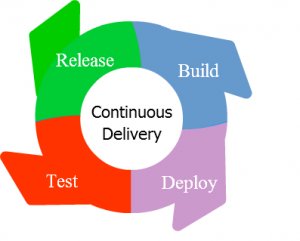
TL; DR
- Enterprises tend to ‘optimise’ IT by vertical stack & incur long delays at point of organisational change: waiting days or weeks for ticket fulfilment
- In contrast small companies inherently recognize Value Streams
- Enterprises overlaying Value Stream teams at organisational change would be much more competitive, including within software delivery
Example 1: New Starter Process
In the last 6 years I’ve had the pleasure of starting work at 2 large (1000+ employee) enterprises, and one startup. The new starter on-boarding process at both these companies was slow – I finally had all the access to all the systems I needed a few weeks after starting - and it involved lots of opening tickets. In both cases thousands of pounds was wasted on unused manpower whilst I sat waiting.
When I checked this with friends at other enterprises I found they’d had worse experiences in many cases: “You got a laptop in your first week?! Wow!”, “You were able to login on your third day? Incredible!”.
I contrast this with working at a small startup: I arrived, was hand-held through the process of accessing all the systems I needed & was adding value by the end of first day.
Small companies natively understand that getting a new starter working quickly is valuable to the company. They inherently use a Value Stream, a concept from the Lean movement which came from Toyota Production System (TPS), to allow cross-functional activities to happen in order to gain value (i.e. eliminate waste) for the company. The cross-functional activities being in this case: providing laptops, getting software licenses, installing software, creating accounts, getting access across systems, locating documentation, etc.









